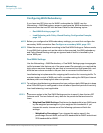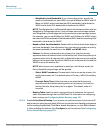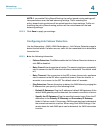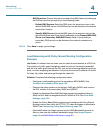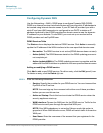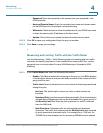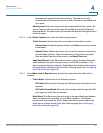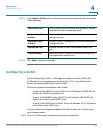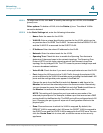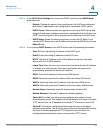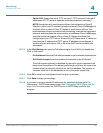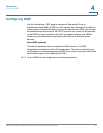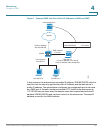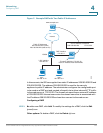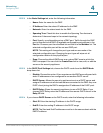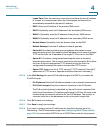
Networking
Configuring a VLAN
Cisco ISA500 Series Integrated Security Appliances Administration Guide 138
4
STEP 1 To add a new VLAN, click Add. To modify the settings for a VLAN, click the Edit
(pencil) icon.
Other options: To delete a VLAN, click the Delete (x) icon. The default VLANs
cannot be deleted.
STEP 2 In the Basic Settings tab, enter the following information:
• Name: Enter the name for the VLAN.
• VLAN ID: Enter a unique identification number for the VLAN, which can be
any number from 3 to 4089. The VLAN ID 1 is reserved for the DEFAULT VLAN
and the VLAN ID 2 is reserved for the GUEST VLAN.
• IP Address: Enter the subnet IP address for the VLAN.
• Netmask: Enter the subnet mask for the VLAN.
• Spanning Tree: Check this box to enable the Spanning Tree feature to
determine if there are loops in the network topology. The Spanning Tree
Protocol (STP) is a link layer network protocol that ensures a loop-free
topology for any bridged LAN. The STP is used to prevent bridge loops and
to ensure broadcast radiation.
• Voice VLAN: Check the box if you want voice applications to use this VLAN.
• Port: Assign the LAN ports to the VLAN. Traffic through the selected LAN
ports is directed to the VLAN. All available ports including the dedicated LAN
ports and the configurable ports appear in the Port list.
Choose the ports from the Port list and click Access to add them to the
Member list and set the selected ports as the Access mode. Alternatively,
you can choose the ports from the Port list and click Trunk to add them to
the Member list and set the selected ports as the Trunk mode.
NOTE: This setting will change the port type and access mode of the
selected physical ports. For example, choose a port that was set as a DMZ
port and add it to the Member list. The DMZ port will be configured as a LAN
port. Changing the port type will wipe out all configuration relative to the
physical port.
• Zone: Choose the zone to which the VLAN is mapped. By default, the
DEFAULT VLAN is mapped to the LAN zone, the GUEST VLAN is mapped to
the GUEST zone, and the VOICE VLAN is mapped to the VOICE zone. You can
click the Create Zone link to view, edit, or add the zones on the security
appliance.



